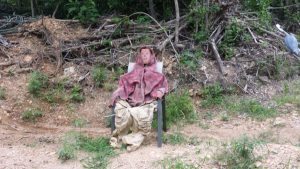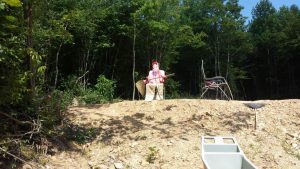I guess by this time in my life, most people would have a tight house, be well organized, with all the comforts of home. There are times when I wonder if hiring out my body full time for money, going into debt for thirty years, and building everything right away might have been an easier route. I guess everyone does what they do according to what they know.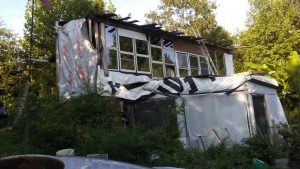
For me building this house has been a continuous stop and start affair. Get a little money, buy some parts, move the project forward (sometimes sideways). Right now I’m lowering some of the temporary walls, establishing the permanent top plates and getting ready to set the real roof in place.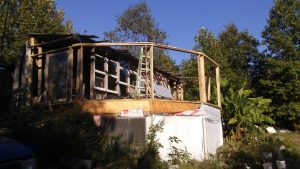
The house is a yurt design, but for a while I was still thinking about a more geodesic approach. Now that I have the roof lumber on site with more permanent walls in place, I guess the yurt design is the one I will use- maybe the geodesic will work for a greenhouse.
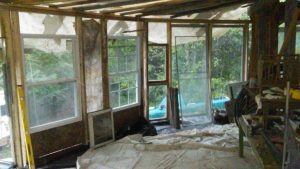
Anyway, I build with screws, which facilitate changing my mind (the walls started out over 8 feet tall). 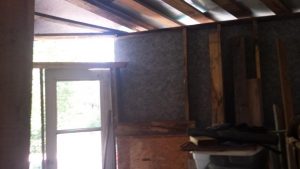
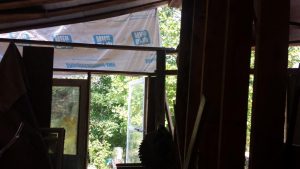
This also makes temporary walls and supports easy to construct and easy to remove. Many of the temporary roof boards have never been cut and many have no fasteners except gravity. So they lay up there in an overlap fashion, resting quietly on temporary walls, waiting for me to get off my ass and finish the job.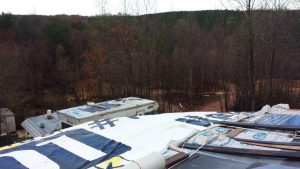
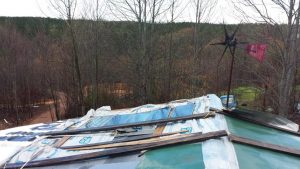
Today I unrolled a piece of rubber roofing that has been repurposed many times in earlier structures and cut it in two so I can carry it up the ladder and use it as a quick cover on the central flat roof supported by the yoke of the yurt (no I’m not deliberately trying to be funny).
The point I’m trying to make is, I heartily endorse going slow with large investments, and especially endorse not going into debt any more than necessary,
Yes, occasionally a bit of debt might be useful if it really improves water supplies (as in renting a backhoe for earthworks) or some other investment with really good paybacks, but make sure to have a source of funding that will ultimately pay it back, and do so as quickly as possible. It’s no fun being in servitude to the bank.
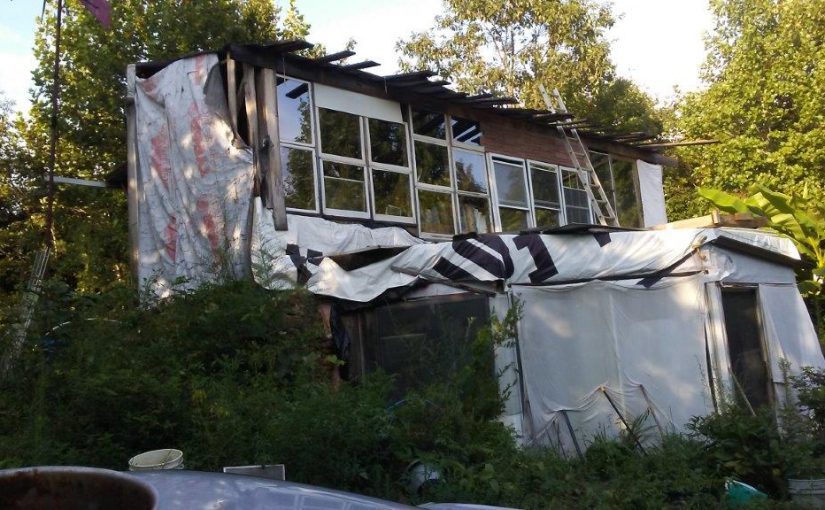
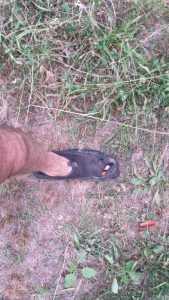
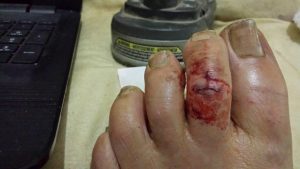
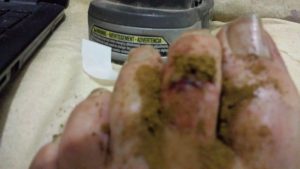 but should be good enough for this cut. As you can see from the pictures it continued to bleed freely after bandaged and inside a sock.
but should be good enough for this cut. As you can see from the pictures it continued to bleed freely after bandaged and inside a sock.  The bleeding actually helps to clean the wound, plus the fact that it was not too deep means an antibiotic like goldenseal is really just a precaution. But should you ever be in a dire situation, the potency of your herbs might make a big difference in how fast you heal. Goldenseal should be golden, not as dark as this, taste should be very bitter.Goldenseal is one of the plants I consider vital to have growing nearby.
The bleeding actually helps to clean the wound, plus the fact that it was not too deep means an antibiotic like goldenseal is really just a precaution. But should you ever be in a dire situation, the potency of your herbs might make a big difference in how fast you heal. Goldenseal should be golden, not as dark as this, taste should be very bitter.Goldenseal is one of the plants I consider vital to have growing nearby. 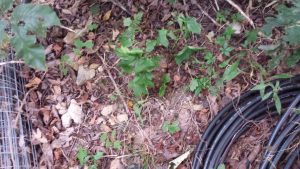 This plant has been tortured by the dry spell and I actually haven’t paid any attention to it all summer, but right after taking this picture I watered it and plan to keep watering it as long as it is this hot. Ordinarily this plant would be in a more deeply wooded area, cooler with more shade so once environments get more stable and heavy machinery has done it’s thing, I’ll go out looking for a more suitable place.
This plant has been tortured by the dry spell and I actually haven’t paid any attention to it all summer, but right after taking this picture I watered it and plan to keep watering it as long as it is this hot. Ordinarily this plant would be in a more deeply wooded area, cooler with more shade so once environments get more stable and heavy machinery has done it’s thing, I’ll go out looking for a more suitable place.